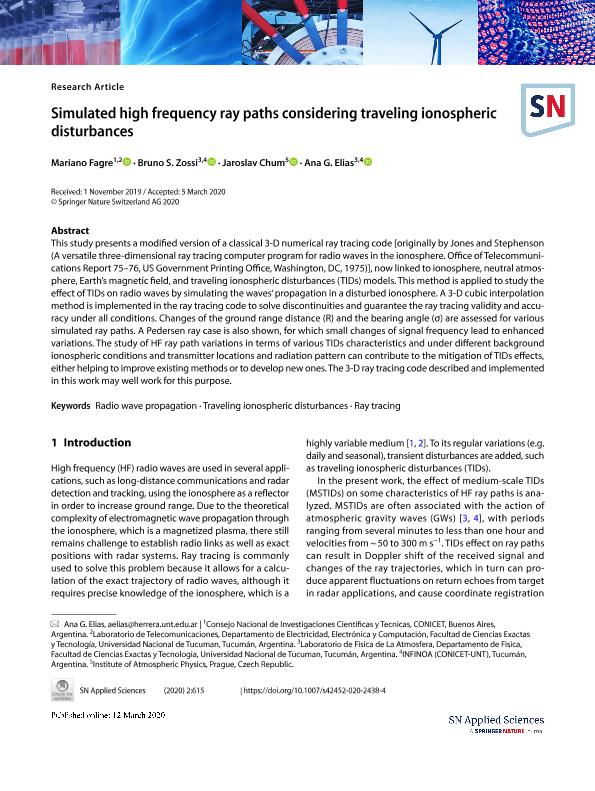Artículo
Simulated high frequency ray paths considering traveling ionospheric disturbances
Fecha de publicación:
03/2020
Editorial:
SN Applied Sciences
Revista:
SN Applied Sciences
ISSN:
2523-3963
Idioma:
Inglés
Tipo de recurso:
Artículo publicado
Clasificación temática:
Resumen
This study presents a modified version of a classical 3-D numerical ray tracing code [originally by Jones and Stephenson (A versatile three-dimensional ray tracing computer program for radio waves in the ionosphere. Office of Telecommunications Report 75–76, US Government Printing Office, Washington, DC, 1975)], now linked to ionosphere, neutral atmosphere, Earth’s magnetic field, and traveling ionospheric disturbances (TIDs) models. This method is applied to study the effect of TIDs on radio waves by simulating the waves’ propagation in a disturbed ionosphere. A 3-D cubic interpolation method is implemented in the ray tracing code to solve discontinuities and guarantee the ray tracing validity and accuracy under all conditions. Changes of the ground range distance (R) and the bearing angle (σ) are assessed for various simulated ray paths. A Pedersen ray case is also shown, for which small changes of signal frequency lead to enhanced variations. The study of HF ray path variations in terms of various TIDs characteristics and under different background ionospheric conditions and transmitter locations and radiation pattern can contribute to the mitigation of TIDs effects, either helping to improve existing methods or to develop new ones. The 3-D ray tracing code described and implemented in this work may well work for this purpose.
Palabras clave:
RADIO WAVE PROPAGATING
,
RAY TRACING
,
TRAVELING IONOSPHERIC DISTURBANCES
Archivos asociados
Licencia
Identificadores
Colecciones
Articulos(CCT - NOA SUR)
Articulos de CTRO.CIENTIFICO TECNOL.CONICET - NOA SUR
Articulos de CTRO.CIENTIFICO TECNOL.CONICET - NOA SUR
Citación
Fagre, Mariano; Zossi, Bruno Santiago; Chum, Jaroslav; Elias, Ana Georgina; Simulated high frequency ray paths considering traveling ionospheric disturbances; SN Applied Sciences; SN Applied Sciences; 2; 4; 3-2020; 1-8
Compartir
Altmétricas




